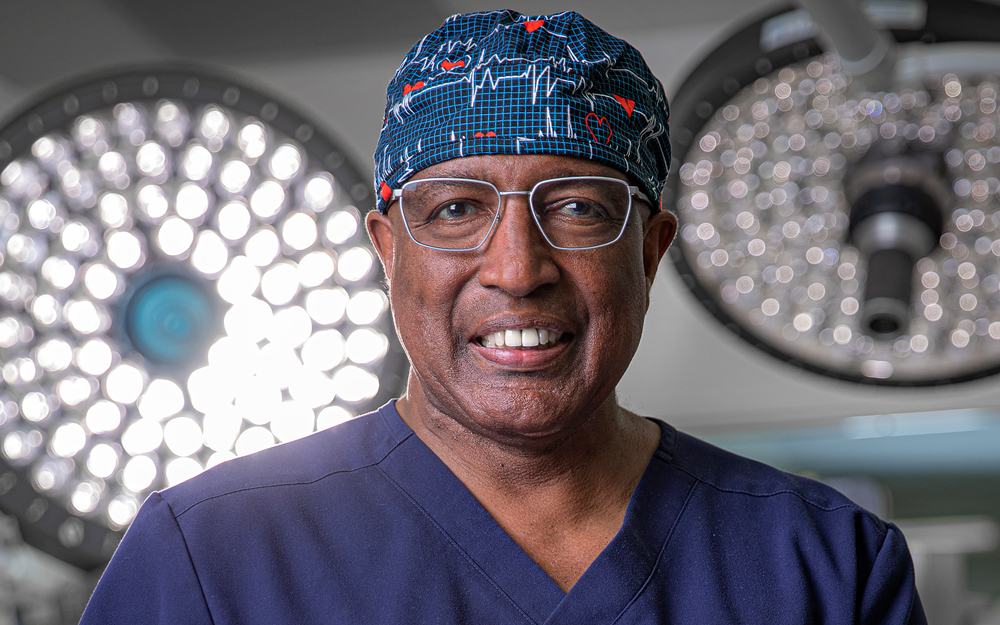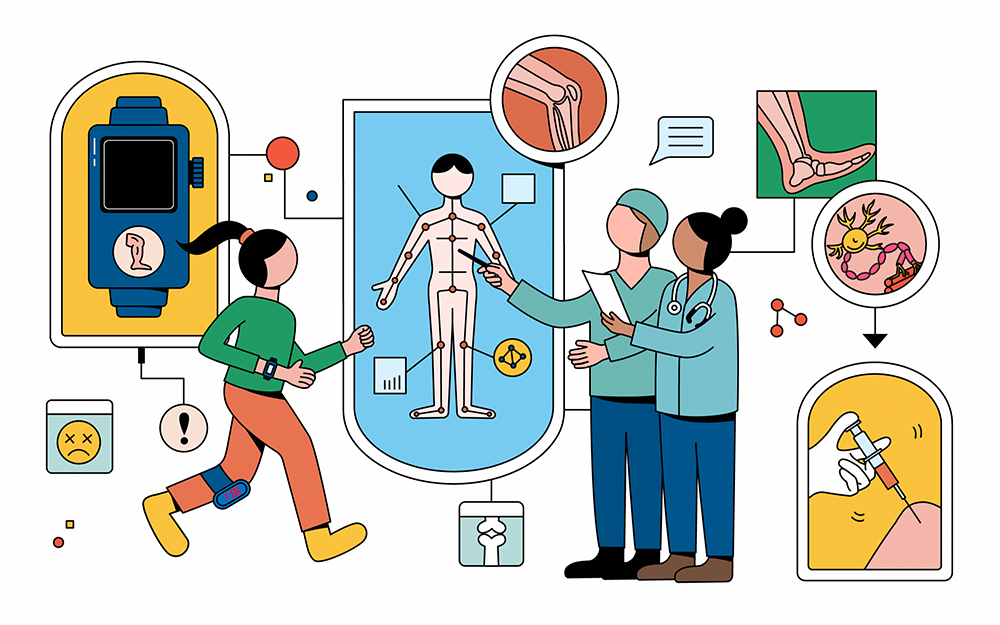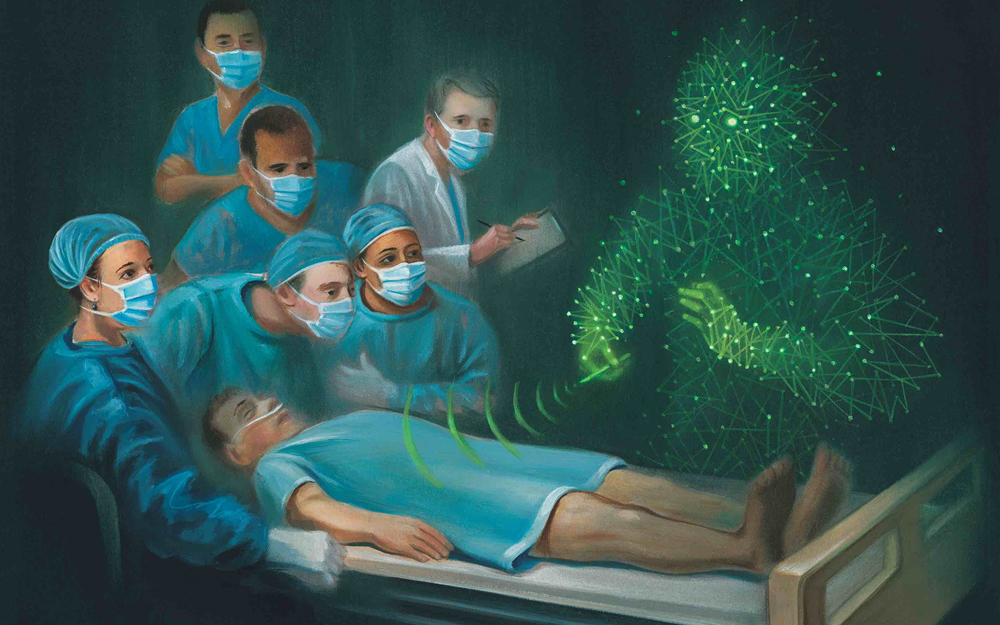Crafting a Clinical Trials Hub
Date
April 1, 2024
Credits

Date
April 1, 2024
Credits
Medical providers featured in this article
In Brief
{{cta-block}}
Michael Farkouh, MD, plans to make Cedars-Sinai a one-stop shop for clinical trials.
From antibiotics to vaccines, revolutionary advances in medicine can trace their success to a common origin: game-changing clinical trials. Developing a robust clinical trial pipeline—building capacity and expanding trials across disciplines—is the passion and purview of internationally distinguished academic leader and researcher Michael Farkouh, MD. His 2023 appointment as associate dean for Research and Clinical Trials at Cedars-Sinai has galvanized the institution’s focus on creating a new model for clinical trials to increase discoveries that benefit patients.
"People come to Cedars-Sinai because they want the latest and most advanced diagnostic and therapeutic tools. Because we participate in trials, we're able to provide access to them," Farkouh said.
Farkouh spoke with Discoveries about what is on the horizon and his plans to make Cedars-Sinai an umbrella organization for clinical trials worldwide.
What is the advantage of establishing a hub for clinical trials? Why the emphasis on scale?
By making Cedars-Sinai a central destination for all types of trials (local, single center, early phase, multicenter) with our incredible faculty at the helm, we can create a one-stop shop where we develop the trials, secure the funding and manage the data. This can dramatically accelerate the pace of innovation as we translate study findings into clinical practice quickly, efficiently and safely. Particularly given the strength of our varied departments and our Biostatistics Shared Resource, we think we can be one of the few places nationwide that can actually do this.
Michael Farkouh, MD
Sold On the Golden State
I am a native Canadian but have spent most of my career in the U.S., primarily in New York City. Los Angeles has been a revelation to me. The weather is generally amazing, and Southern California offers a very high quality of life. Most importantly, I have met so many fascinating people, each with their own unique story.
News From the Home Front
My wife is a neurologist and leader in the field of headache disorders, including migraines. We have two college-aged children: a daughter finishing her third year of medical school and a son graduating with a degree in engineering.
Success on the World Stage
I founded the Worldwide Network for Innovation in Clinical Education and Research (WNICER), an international clinical trials network that advances multidisciplinary clinical research.
Are there benefits to doing this work in a hospital setting?
In many institutions, research and clinical care occupy separate silos. At a medical center like Cedars-Sinai, we are interested in integrating clinical care with research to inform practice—finding ways to make it more efficient and inclusive. We are especially fortunate to have a unique governance here, one that streamlines oversight and embraces multidisciplinary partnerships. This allows us to move more nimbly—and to carry initiatives forward more organically—compared to other academic medical centers. The COVID-19 pandemic has offered a great example of this: We were able to launch studies rapidly and involve a wide range of specialists, which was a tremendous boon to our progress because the disease affects multiple systems and requires interdepartmental collaboration.
Cedars-Sinai is a major healthcare provider and a center of excellence in a large community with a diverse population. It is an ideal setting for us to create a collaborative network that brings together top scientists and physicians to operationalize the systems we’re putting in place. That is how we’ll move ahead faster, instead of taking the traditional five to 10 years to build a trial. As we learned during the pandemic, we need to accelerate the trials; our patients cannot afford to wait.
Why is patient diversity such a critical component of high-impact clinical trials?
Engaging diverse patients across spectrums such as age, race and socioeconomic status can result in findings that translate to other healthcare systems in the U.S. and abroad. Put simply, it is a strategy for helping more people in more places.
In my role at Cedars-Sinai, finding new opportunities to serve greater numbers of patients who have historically been underrepresented in medical research is one of the things that most excites me. It is a real challenge in clinical research, and one that people often aren’t aware exists. Community engagement is a cornerstone of Cedars-Sinai’s work, and building it out even further can help participants feel safe and supported. This, in turn, can boost enrollment in trials and lead to even greater local and global impact.
Your research at the intersection of diabetes and cardiovascular disease—including your involvement as principal investigator in the FREEDOM trial—has helped reshape the treatment landscape. Why was that trial so significant?
FREEDOM compared two solutions for multivessel coronary artery disease in diabetic patients: coronary artery bypass graft surgery versus percutaneous coronary intervention with stents. The trial redefined the boundary of stenting and changed the guidelines of practice immediately. It’s an example of what we can accomplish by implementing this network model of clinical trials and fostering mutual trust and support among world-class experts collaborating for the common good. Clinical trials at Cedars-Sinai offer this same kind of groundbreaking potential.





